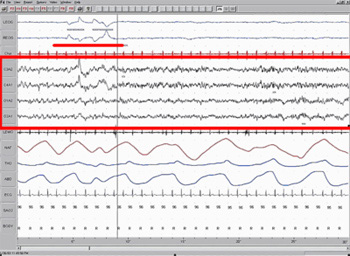October 13, 2008
Don’t Mess With Mother Nature: Circadian Rhythms Are Necessary For Memory

By Michael D. Shaw
The term “circadian rhythm” refers to the cyclical 24-hour period of human biological activity. The Latin derivation of “circadian” is from circa about + dies day. Notwithstanding the overachievers among us, the typical human circadian pattern is 16 hours waking time and eight hours of sleep.
Signals are transmitted from the retina of the eye to the brain’s hypothalamus—the control center for establishing sleep patterns. When light is detected by the retina, melatonin production is inhibited, preparing us for waking activities. Conversely, darkness activates melatonin production, preparing us for sleep. Long distance travel across many time zones will interrupt the circadian rhythms, causing jet lag.
For people who must make several transcontinental flights per month, symptoms of mental and physical fatigue are well-recognized, but in humans and other mammals studied under controlled conditions, no long-term health effects related to circadian rhythm disruption have ever been documented.
One reason for this is that previous lab techniques to knock out rhythms have involved invasive surgical procedures that would likely have impaired cognitive or physical function.
But now, a group from Stanford University, led by H. Craig Heller and Norman Ruby, figured out a way to disrupt the rhythms in a noninvasive manner, as they evaluated cognitive function in the Siberian hamster, a cute little rodent about the size of a mouse. Their results were published recently in the Proceedings of the National Academy of Sciences, in a study entitled “Hippocampal-dependent learning requires a functional circadian system.”
The researchers knew, as this has been established since the 1970s, that the circadian system affects learning, but no one had looked at the effect of completely eliminating the system. The group knocked out the hamsters’ circadian system by effectively “jet-lagging” them.
The animals got blasted with bright light for two hours late at night, and on the following day, the normal light/dark cycle was delayed by three hours. For humans, this would only be the equivalent of a cross-country trip west, but for the hamsters, this one-time treatment will wipe out their circadian systems long enough to get some data.
The team ran a so-called novel object recognition test on the arrhythmic and normal control hamsters. In practice, a hamster is placed in a 2 foot (0.6 m) square box, in which two identical objects are situated (in adjacent corners). The animal will explore the box and its contents, spending approximately equal amounts of time on the two objects.
After five minutes, the hamster is taken out of the box, and one of the objects is replaced with something different. A waiting period of 20 minutes to an hour occurs, whereupon the hamster is placed back in the box. As Ruby says, “A normal animal will spend time with both objects, but it will spend easily twice as much time with the new one. It understands that it has seen the other one before.”
However, the arrhythmic hamsters behave differently. When put back in the box, they spend the same amount of time with each object. Ruby notes, “What that means is they don’t remember the object that was in there before.” Moreover, arrhythmic hamsters get more sleep than the control group.
“What our data are showing is that these animals still performed terribly on a simple learning task, even though they’re getting loads of sleep,” Ruby said. “What this says is that the circadian system really is necessary for something that is deeply important: learning.”
Besides melatonin, another chemical of great interest in the circadian cycle is Gamma-aminobutyric acid (GABA)—the chief inhibitory neurotransmitter in the mammalian central nervous system. As such, Ruby theorized that the arrhythmic hamsters had high levels of GABA, and that was inhibiting the hippocampus—the portion of the brain where memories are stored.
The researchers tested this idea by giving the arrhythmic hamsters the GABA antagonist pentylenetetrazole (PTZ), which blocks GABA from binding to synapses, thereby allowing the synapses to continue firing and keeping the brain in a more excited state. Presto! The impaired hamsters soon became scholars on a par with the control group.
The implications for humans are quite interesting. Both Down Syndrome and Alzheimer’s can be simulated in mice, and some research indicates that dosing the animals with PTZ improves learning and memory.
Ruby concludes, “In aging humans, one of the big things that happens is the circadian system starts to degrade and break down. When you get older, of course, a lot of things break down, but if the circadian system is a player in memory function, it might be that the degradation of circadian rhythms in elderly people may contribute to their short-term memory problems. There are a lot of things that could cause memory to fail, but the idea would be that in terms of developing therapeutic treatments, here is a new angle.”

